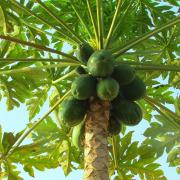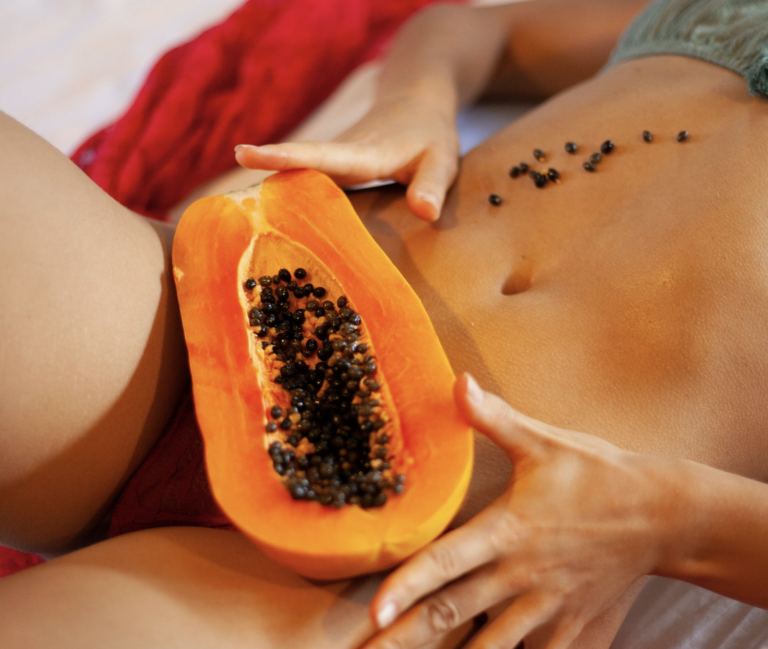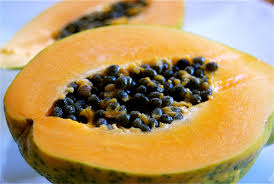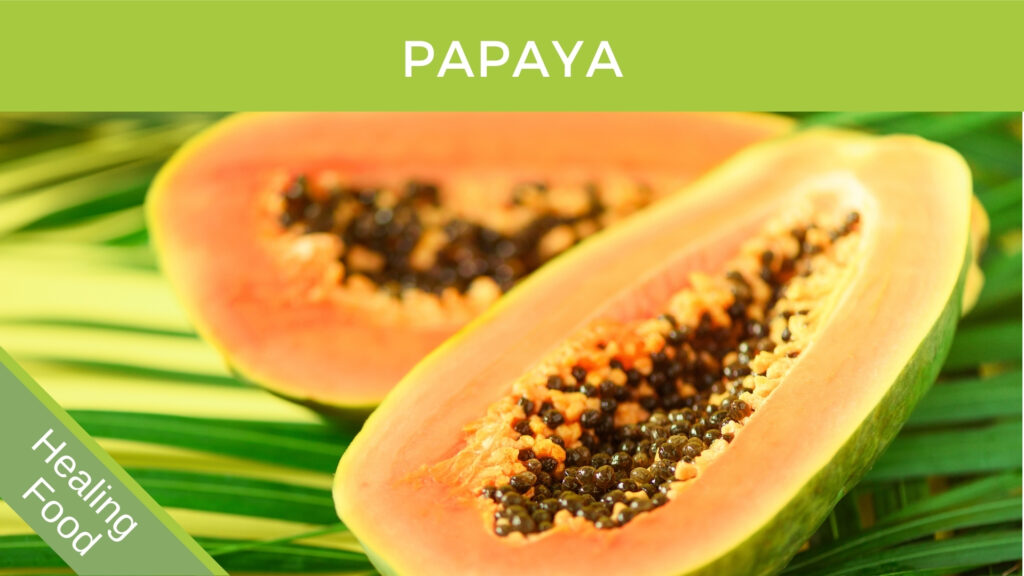- 9 months ago
- 6Minutes
- 1287Words
- 495Views
(1) Families of cysteine peptidases. http://www.sciencedirect.com/science/article/pii/0076687994440344
(2) Wikipedia Papaya https://en.wikipedia.org/wiki/Papaya
(3) The British Medical Journal https://www.ncbi.nlm.nih.gov/pmc/articles/PMC2256815/pdf/brmedj04720-0012a.pdf
(4) Effect of ether- and water-soluble fractions of Carica papaya ethanol extract in experimentally induced hyperlipidemia in rats. PUBMED https://www.ncbi.nlm.nih.gov/pubmed/22077166
(5) Assessment of the anthelmintic effect of natural plant cysteine proteinases against the gastrointestinal nematode, Heligmosomoides polygyrus, in vitro. PUBMED https://www.ncbi.nlm.nih.gov/pubmed/15727070
(7) [Pharmacological study of papain from the papaya plant cultivated in Uzbekistan]. PUBMED https://www.ncbi.nlm.nih.gov/pubmed/10934598
(8) The treatment of paediatric burns using topical papaya. PUBMED https://www.ncbi.nlm.nih.gov/pubmed/10563690
(9) Determination of papain in raw meat by immunoassay. PUBMED https://www.ncbi.nlm.nih.gov/pubmed/22060266
(10) The proteolytic activities of chymopapain, papain, and papaya proteinase III. PUBMED https://www.ncbi.nlm.nih.gov/pubmed/3919769
(11) Characterization of papaya peptidase A as an enzyme of extreme basicity. PUBMED https://www.ncbi.nlm.nih.gov/pubmed/6362305
(12) Isolation of highly active papaya peptidases A and B from commercial chymopapain. PUBMED https://www.ncbi.nlm.nih.gov/pubmed/7018581
(13) Protective effects of Carica papaya Linn on the exogenous gastric ulcer in rats. PUBMED https://www.ncbi.nlm.nih.gov/pubmed/7053020
(14) Mahmood A A, Sidik K, Salmah I. Wound healing activity of Carica papaya L. Aqueous leaf extract in rats. Int J Mol Med Adv Sci 2005; 1: 398 – 401. http://www.ijppsjournal.com/Vol6Issue1/6025.pdf
(15) Owoyele B V, Adebukola O M, Funmilayo A A, Soladoye A. Anti-inflammatory activities of ethanolic extract of Carica papaya leaves. Inflammo pharma 2008; 16: 168 –173.
(16) Nayak S B, Pinto Pereira L, Maharaj D. Wound healing activity of Carica papaya L. in experimentally induced diabetic rats. Indian J Exp Biol 2007; 45: 739 – 743
(17) Cysteine proteinases from papaya (Carica papaya) in the treatment of experimental Trichuris suis infection in pigs: two randomized controlled trials. PUBMED https://www.ncbi.nlm.nih.gov/pmc/articles/PMC4049439/
(18) Assessment of the antiprotozoal activity of crude Carica papaya seed extract against Trypanosoma cruzi. PUBMED https://www.ncbi.nlm.nih.gov/pubmed/24126379
(19) Effectiveness of Nutritional Ingredients on Upper Gastrointestinal Conditions and Symptoms: A Narrative Review. PUBMED https://www.ncbi.nlm.nih.gov/pmc/articles/PMC8839470/
Traditional use
A meat tenderizing proteolytic enzyme Papain is obtained from papaya (Carica papaya) and is commonly used in the meat processing industry. (9)

In the 19th Century professor Finkler, who occupied the chair of physiology at the University of Bonn, and who for a few years had been experimenting with the digestive ferments found Papain of considerable use. (3)
The properties of Papain as determined by Professor Finkler include:
1. It digests equally in acid, alkaline, or neutral fluids, best of all in water.
2. It will dissolve 1,000 times its own weight of fresh blood-fibrin.
3. It’s action is increased by the presence of pepsin and pancreatin.
4. It acts at the temperature of the body.
5. Meat infused with a solution of papain keeps while undergoing a softening process, much longer than it does without it. From this, it can be inferred that it has an antiseptic as well as a peptonizing action.
6. The product of its action is a pepton, which, from its properties, may be taken to be Meissner’s c pepton.
7. Papain adheres to albumen to such a degree as to prevent its being removed by protracted washing with water.
8. Papain, in contrast to pepsin, acts when the resulting pepton-solution is highly concentrated.
9. The addition of antiseptics, such as salicylic or carbolic acids, does not interfere with its action. (3)
Active Constituents of Papaya
Papaya contains a group of proteinases which are: papain, chymopapain and papaya proteinase III. (10) The enzyme group also contains the highly alkaline Papaya peptidase A (11) along with chymopapain B, and papaya peptidase B (12)

Scientific Research for Papaya
Cholesterol
A study dose-dependently inhibited the total cholesterol (TC), triglycerides (TG), low-density lipoproteins (LDL) level, and significantly increased high-density lipoprotein (HDL) level. (4)
Anthelmintic (worm killing)
One study indicated that the purified proteinases were more efficacious than the proteinases, including papain. The efficacy and mode of action make plant cysteine proteinases potential candidates for a novel class of anthelmintics urgently required for the treatment of humans and domestic livestock. (5)
Wound Healing
Papain solutions decreased the weight of burn crust in vitro and accelerated experimental burn healing in vivo. Under clinical conditions, papain produced a therapeutic effect in patients with inflammatory disorders in genitals, intestine, liver, and eye. (7)
The pulp of the papaya fruit is mashed and applied daily to full thickness and infected burns. It appears to be effective in desloughing necrotic tissue, preventing burn wound infection, and providing a granulating wound suitable for the application of a split thickness skin graft. Possible mechanisms of action include the activity of proteolytic enzymes chymopapain and papain, as well as an antimicrobial activity. (8)

Indigestion and Acid Reflux
Wound Healing
The dry leaves were prepared to a fine texture form using a grinder. 50 g of the powder was placed into 1000 mL flask. Water was added on a hotplate for 3 h. After being left to cool mixture was filtered with filter paper, the filtrate was rotor evaporated to remove the water. The Aqueous extract was then freeze-dried to produce a powder. (14)
Diabetic wound healing: Unripe fruits of Carica papaya were cleaned with distilled water and the outer green thin layers were peeled and discarded. The underlying epicarp (200 g) was blended with 50 mL of distilled water to a fine texture form using a blender. The mixture was then filtered using a fine muslin cloth followed by rotor evaporation to remove water. Then the filtrate was oven-dried at 40oC and the obtained extract was used in the study. (16)
Anti-inflammatory
The leaves were air dried and reduced to powder form using pestle and mortar. 400 g of the prepared powder was extracted with 2L ethanol using cold maceration method. The mixture was then filtered and evaporated at 50°C in a water bath to obtain 27. 2 g of semi solid extract. The extract was stored at 4°C and prepared later for oral administration. (15)
Antiparasitic
Papaya (Carica papaya) extract possesses anthelmintic properties against human soil-transmitted helminths (STH, Ascaris lumbricoides, Trichuris trichiura and hookworm). (17) results demonstrate that the fatty acids identified in the seed extracts of papaya are able to reduce the number of protozoan parasite Trypanosoma Cruzi from both parasite stages, blood trypomastigote and amastigote (intracellular stage). (18)
Gastric Ulcer
The latex of the unripened fruit of papaya was effective in protecting the exogenous ulcer. The conclusion is that papain is the active principle in papaya that exerts the ulcer-protective effect. (13)
Conclusion
The combined actions of protein enzymatic activity, cholesterol lowering, worm expelling, ulcer healing and general healing, anti-inflammatory effect make papain an indispensable herbal medicine.
It’s value in supporting the health of the digestive system and healing while easing the process of digestion gives cause to use Papain in a digestive context.
It plays an important role as a enzyme supplement.
You can find Papain in the following products:
- The Ultimate Herbal DETOX (480 capsules)
- BodiTune Detox n SLIM (32 sachets)
- Digezaid (120 Capsules)
Brett Elliott ©



